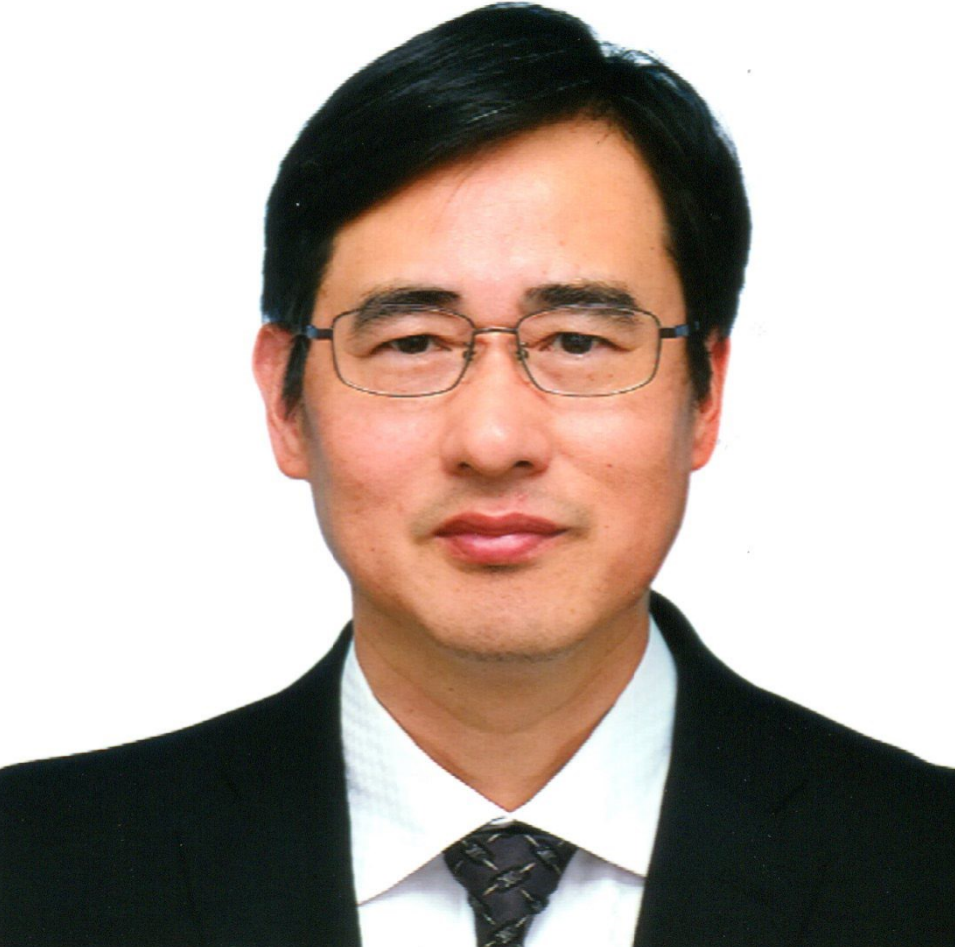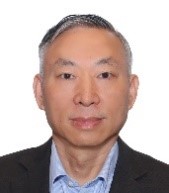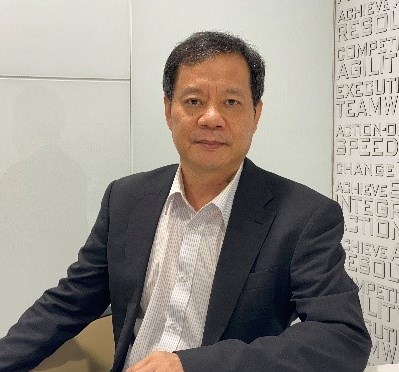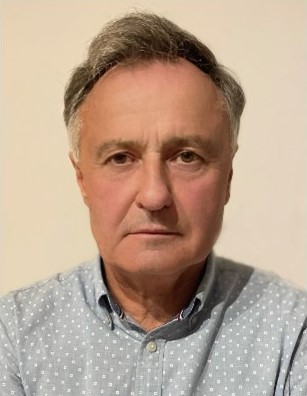Keynote Speakers
Prof. Qixin Guo
Department of Electrical and Electronic Engineering,Synchrotron Light Application Center, Saga University, Japan
Speech Title: Full Color Light Emitting Diodes Based on Rare Earth Doped Oxide Films
Abstract: Micro scale light emitting diodes (μLEDs) have been extensively studied for augment and virtual reality display applications. It is highly required that μLEDs have high pixels per inch, high efficiency and brightness, stable emission, and full color emission. However, the realization of full color μLED display technology has been challenging because conventional mass transfer processes require the extraction of red, green, and blue μLED chips from different epitaxial wafers followed by precision transfers. Full color LEDs can be fabricated by using GaInN with different indium concentration as luminescence layers. However, the emission wavelength is unstable due to its temperature dependence of bandgap.
Rare earth (RE) doped semiconductors, which exhibit strong and sharp emission due to intra-4f-shell transitions in RE ion cores, have potential applications in color display and luminescence devices. Historically, much effort has been made to produce visible color emission using RE doped GaN. It has been reported that the luminescence efficiency of dopant emissions could be highly improved with a wide bandgap host. Moreover, the wide bandgap semiconductors exhibit highly thermal and chemical stability, which make them ideal hosts for RE ions. We have demonstrated that red, green and blue emissions are clearly observed from the Eu, Er, and Tm doped Ga2O3 films respectively. We found that the normalized emission intensity of the RE doped Ga2O3 films has a smaller temperature variation compared to that of the RE doped GaN films and showed that the bandgap of the films can be increased by adding Al into the films. In this talk, we present on the structure, surface morphology and temperature dependence of the photoluminescence of the RE doped (AlGa)2O3 films. Recent progress on the properties of the full color LEDs by using Eu, Er, and Tm co-doped Ga2O3 films will also be reported.
Biography: Prof. Dr. Guo received B. E., M.E., and Dr. E degrees in electronic engineering from Toyohashi University of Technology in 1990, 1992, and 1996, respectively. He is currently a Professor of Department of Electrical and Electronic Engineering, Saga University and was the Director of Saga University Synchrotron Light Application Center in Japan from April 2012 to March 2022. His research interests include epitaxial growth and characterization of semiconductor materials. Prof. Guo has published more than 370 papers in scientific journals including Nature Communications, Advanced Materials, Physical Review B, and Applied Physics Letters with more than 9300 citations (h-index: 49).
Prof. Zhongwei Guan
Executive Director of Advanced Materials Research Centre of Technology Innovation Institute, Abu Dhabi, UAESpeech Title: 3D Stitching Technology for Composite Repair and Fully Integrated Sandwich Structures
Abstract: Debonding and delamination failure are common problems experienced in composite bonded repair and sandwich structures. There is a need to have an effective approach to locally reinforce the repair patch and fully integrate skins with core. A novel stitching technology has emerged for enhancing the load carrying capacity of composite patch repair as well as the bonding behaviour between skins and core for a sandwich structure. In this approach, holes were first drilled through the scarf patch repaired and sandwich core. Then stitching processes were applied to tie the repair patch against the parent laminates and skins with core. The vacuum resin infusion technique was further used to integrate the threads with the sandwich core-skins and fix the patch to the parent part. The stitch‐reinforced scarf patch is to reduce the amount of parent material that is removed during the repair. It has been shown that for a 2.5 mm diameter stitching thread the ultimate tensile strength of the repaired laminates can be enhanced by 50 %. In the stitched foam-core sandwich panels, stitching represents a more balanced technology for improving the flatwise compressive, bending and shear strength as well as delamination resistance properties of sandwich panels. Further, increasing the fiber volume fraction inside the stitching holes is an effective way to improve the out-of-plane mechanical performance.
Biography: Professor Zhongwei Guan is Executive Director of Advanced Materials Research Centre of Technology Innovation Institute in Abu Dhabi. He received his first degree on Solid Mechanics in Sichuan University China in 1982 and was awarded PhD on Structural Behaviour of Polymeric Pipelining in University of Bradford UK in 1993. He was Reader in Lightweight Composite Materials and Structures at the University of Liverpool. He has published more than 180 SCI papers in refereed leading international journals on lightweight composite structures subjected to extreme loading conditions such as projectile impact and blast, covering fibre metal laminates, PVC foam-based sandwiches and SLM lattice structures, corrugated sandwiches, timber structures, high temperature TP prepreg, etc. Prof Guan is ranked as world top 2 % scientists by Stanford University. He was Chairman of the 5th International Conference on Computational Methods held in Cambridge in 2014. He is a member of editorial board of International Journal of Impact Engineering, Applied Composite Materials and Advanced Materials Letter. He also serves as a scientific committee member of more than 20 international conferences and has given more than 25 keynotes, thematic and plenary speeches.
Dr. Zhaolin Liu
Principal Scientist, Institute of Materials Research and Engineering (IMRE),A*STAR (Agency for Science, Technology and Research), Republic of Singapore
Speech Title: Nanostructured Materials for Next Generation Li-ion Batteries, Metal-air Batteries and Fuel Cells
Abstract: Nanostructured materials are currently of interest for batteries and fuel cells because of their high surface area, novel size effects, significantly enhanced kinetics, and so on. The presentation will describe some our works in nanostructured anode and cathode materials for next generation lithium-ion batteries, especially in silicon/carbon composites by nano silica and carbon-modified nano-silicon particles as anode materials. This modification coating layer composes of the disperse nano-carbon matrix and nano SiO2. The nano-SiO2 layer can avoid volume expansion and contraction and keep the structural perfection of the electrode materials. This could also avoid the subsidiary reactions usually happening between electrolyte and silicon particles and prevent the crack of the coating layer. The carbon crosslinked network can enhance the silicon/carbon composite electrode conductivity. The presentation will also discuss how to further develop electrode materials, electrolyte, electrode formulation, battery design engineering in Li-ion batteries.
The presentation will also give a brief introduction for our research works on nanostructured electrocatalysts as air electrode for metal-air batteries, as well as nanostructured transition metal and alloy-based electrocatalysts for fuel cells.
Biography: Dr. Liu Zhaolin is a Principal Scientist at Institute of Materials Research and Engineering (IMRE), Agency for Science, Technology and Research (A*STAR), Singapore. He was a Senior Group Head of Battery Development & Engineering. His current research interest includes design, synthesis, and structural studies of energy storage materials and development of novel nanostructured materials which are suitable to be applied in Li-ion, metal-air batteries and fuel cells (including catalyst and membrane). He has published more than 240 research papers in refereed scientific journals and received a total citation of more than 23,000 with h-index of 83. He is ranked as world top 2 % scientists (Energy) by Stanford University and highly cited researcher by Clarivate.
Prof. Henryk Paul
Institute of Metallurgy and Materials Science,Polish Academy of Sciences, Poland
Speech Title: Phase Transformations in Explosively Welded Metallic Materials
Abstract: The direct joining of Ta with steel leads to several problems inherent in the formation of brittle reaction regions and complexities associated with the formation of butt joints during further processing of the composite. To overcome these complications, an intermediate layer made of a soft material with high thermal conductivity, such as Cu, can be used. This work presents a comprehensive study of recent advances in understanding of the microstructure-property relationships in a tantalum-stainless steel (SS) composite fabricated by explosive welding with copper interlayers, both during composite formation and post-processing annealing. Using scanning (SEM) and transmission electron microscopy (TEM), interfacial microstructures were investigated, thus providing guidelines for the design of materials. To support the microstructural findings, the evolution of the structure and properties of the interfacial layers was investigated using X-ray synchrotron radiation and nanohardness tests, respectively. Particular attention was paid to the description of the reaction regions and the competition between the strain hardening and softening processes occurring during the formation of the clad and further heat treatment. It was observed that the composite interfacial layers exhibited a complex and hierarchical microstructure. Analyses of the solidified melt regions using various SEM and TEM techniques revealed areas with different morphology and chemical composition. The reaction regions located near the Ta/Cu interface consisted only of a mixture of Cu and Ta particles (ultrafine grains and small dendrites), while the areas near the Cu/SS interface consisted of nanograins with a more complex chemical composition, containing elements from bonded sheets. No significant influence of the annealing process (under the applied conditions - at 750 °C for times up to 103 h) on changes in the microstructure of the solidified melt was observed, apart from a slight increase in grain size. The solidified melt regions, in the as-welded and annealed states were basically 2-3 times harder than the strain hardened steel layers.
Keywords: Explosive welding, Ta/Cu/steel clads, SEM & TEM, Deformation
Acknowledgements: This research was funded in part by National Science Centre (NCN) of Poland, within the project no.: 2018/31/B/ST8/00942.
Biography: Professor Henryk Paul received Dr. Eng. at Institute of Metallurgy and Materials Science (IMMS), Polish Academy of Sciences in Krakow (Poland) in 1989. After working as an assistant professor, he was promoted to an associate professor in 2003 and to a full Professor in 2010, all in IMMS. He is a Co-ordinator of long-term scientific collaborations with ENSM de Saint Etienne and University Paris-Sud, Orsay (France). He is the author more than 270 original papers, 22 book chapters, and 20 review papers on different aspects of phases transformation. His research interests include explosive welding technology, fundamental aspects of deformation, and in particular plastic flow instabilities formation, recovery and recrystallization, SPD processing of metals. He has served as a plenary, keynote or invited speaker at 30 international conferences. His publications receive ~ 2 000 citations (h-index: 26) according to Scopus. Currently employed at the Institute of Metallurgy and Materials Science in Krakow.




